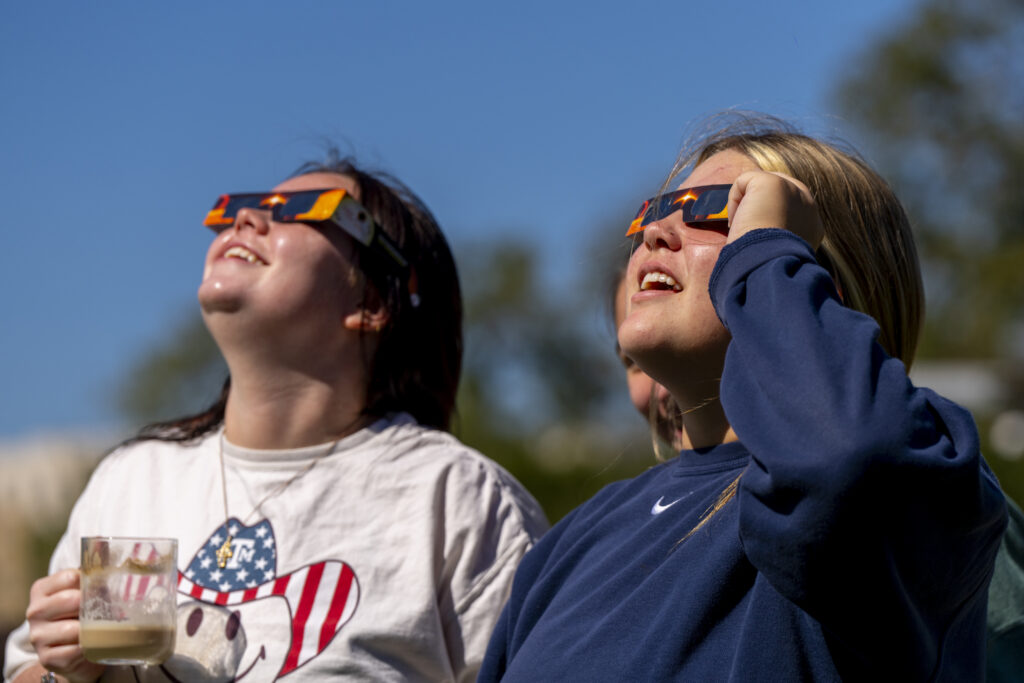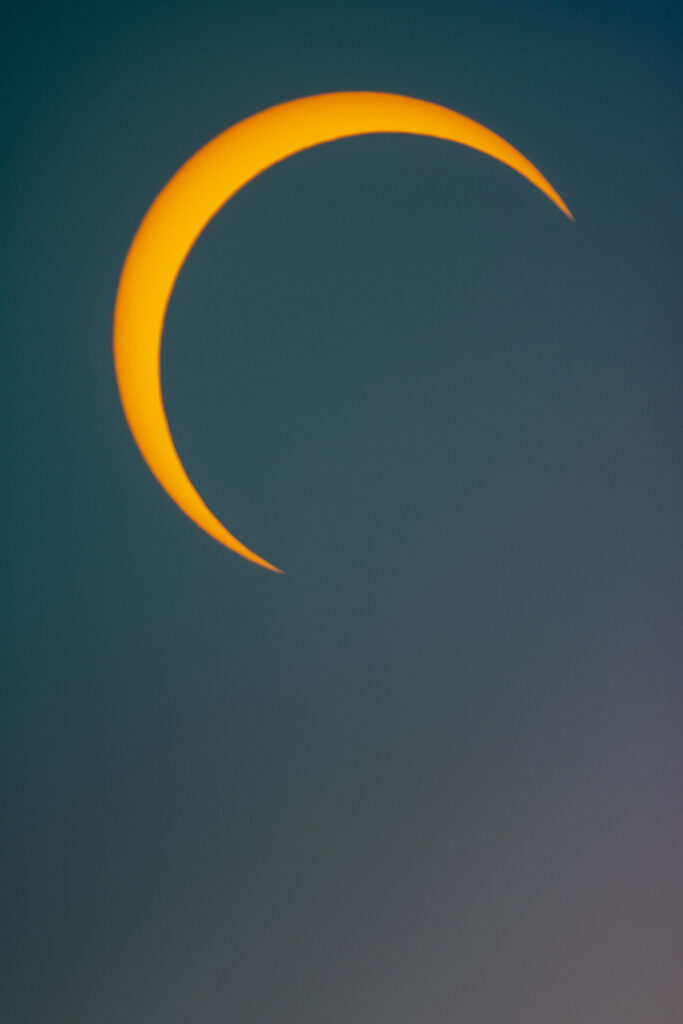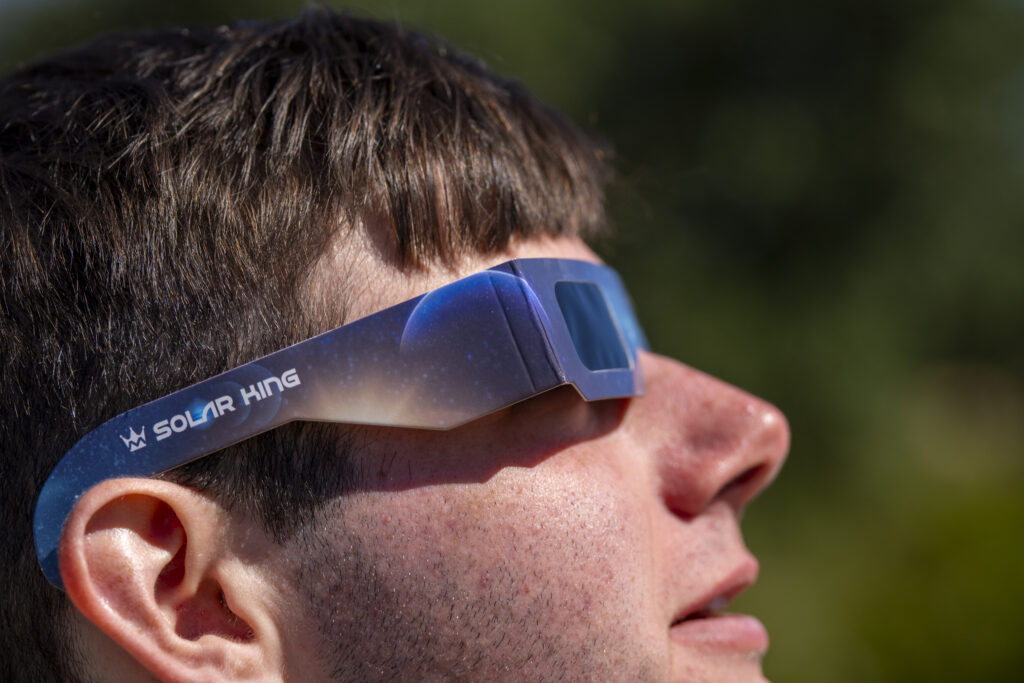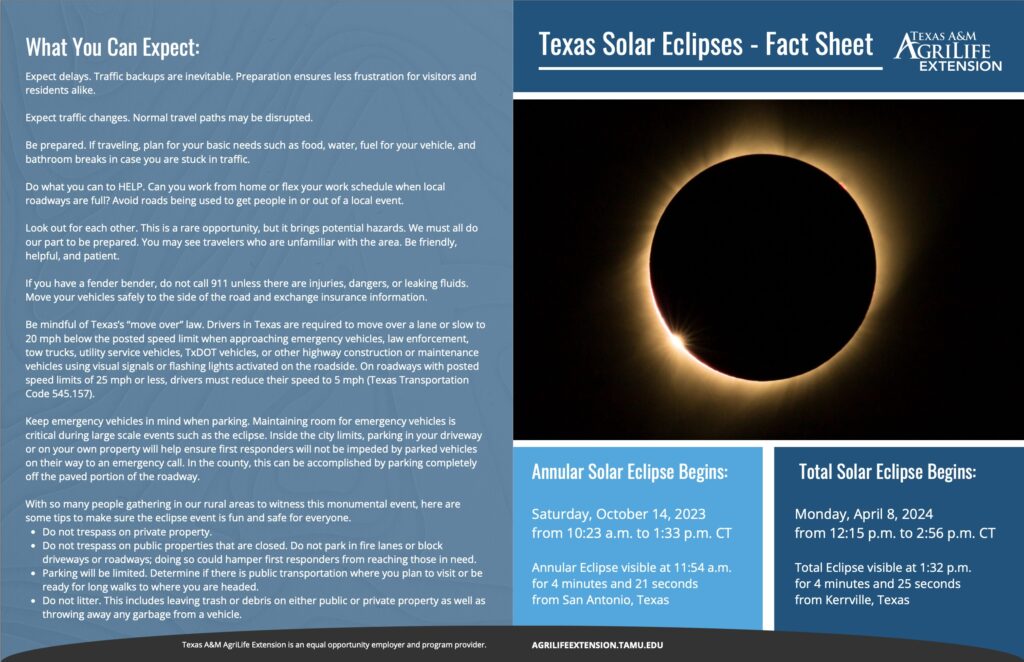
A total solar eclipse will cross North America on April 8. The event will attract thousands of sky watchers to Texas as the moon covers up all or most of the sun. The Texas A&M AgriLife Extension Service’s Disaster Assessment and Recovery unit, in alignment with other state emergency preparedness officials urge individuals to be mindful of increased traffic and resources leading up to the event.
What is a solar eclipse?
Solar eclipses are essentially cosmic confluences, occurring when the sun, the moon and Earth align. The moon passes in front of the sun, temporarily blocking its light. The moon can fully obscure the sun, as is the case with total solar eclipses, or it can block only a part of the sun’s light, as happens with partial solar eclipses.
What to expect

Because a solar eclipse is a natural event and only happens periodically, there is an incredible amount of excitement and many people in Texas can expect a large increase in tourists, increased traffic, heavy spikes in hotel occupancy rates, decrease in the quality of cell service and delays in supply chain deliveries.
How to prepare
Plan and anticipate higher than normal traffic on roadways and commerce at retail businesses. Plan ahead tips include:
- Schedule errands and appointments two to three days before the eclipse.
- Fill up gas tanks.
- Stock up trucks: Make sure oil and transmission levels are full and first aid kits packed as part of basic needs travel.
- Buy and stock up on groceries.
- Know local business and service hours as they might be closed early during the eclipse.
- Have several forms of communication, not only cellular, and know the closest landline.
- Be sure to check the weather.
What to bring

In the case that there will be an eclipse watching event, here are a few items to carry along:
- Eclipse viewing glasses that meet ISO standards.
- Large amounts of drinking water.
- First aid kit and any necessary medications.
- Sunscreen, sunglasses and hat/visor.
- Snacks and/or food.
- Map and/or directions of the event area. Print hard copy to avoid bad cellular service.
- Comfortable folding chairs and clothing.
- Cash, online operating systems may be down due to poor service.
- Bug spray and/or repellant.
More information on preparedness
AgriLife Extension has compiled a fact sheet to help Texans, tourists and local businesses learn how to effectively prepare for the solar eclipse.

Read more via the solar eclipse viewing guide on AgriLife Today.
